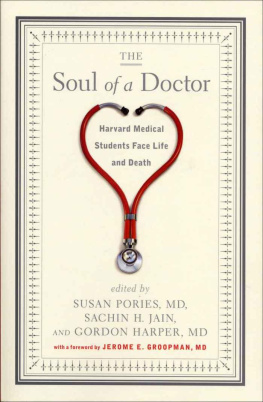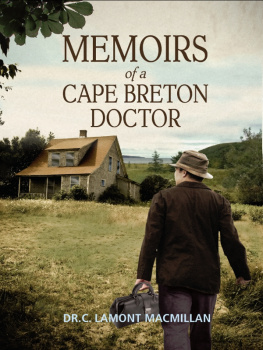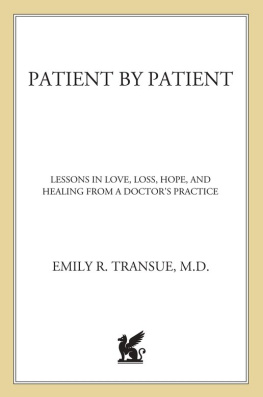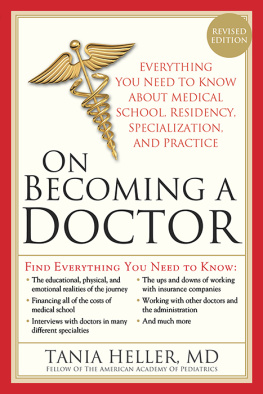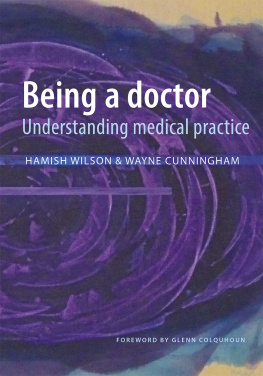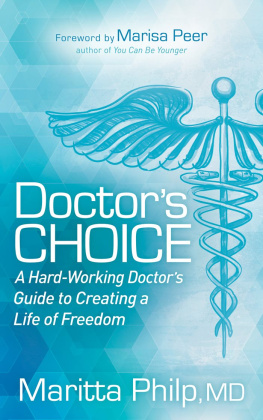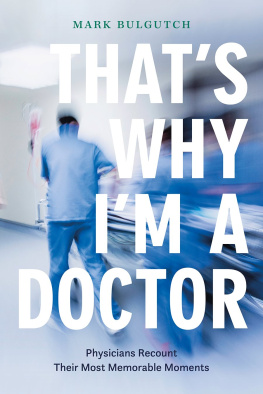Pories Susan - The Soul of a Doctor: Harvard Medical Students Face Life and Death
Here you can read online Pories Susan - The Soul of a Doctor: Harvard Medical Students Face Life and Death full text of the book (entire story) in english for free. Download pdf and epub, get meaning, cover and reviews about this ebook. year: 2012, publisher: Algonquin Books, genre: Detective and thriller. Description of the work, (preface) as well as reviews are available. Best literature library LitArk.com created for fans of good reading and offers a wide selection of genres:
Romance novel
Science fiction
Adventure
Detective
Science
History
Home and family
Prose
Art
Politics
Computer
Non-fiction
Religion
Business
Children
Humor
Choose a favorite category and find really read worthwhile books. Enjoy immersion in the world of imagination, feel the emotions of the characters or learn something new for yourself, make an fascinating discovery.
- Book:The Soul of a Doctor: Harvard Medical Students Face Life and Death
- Author:
- Publisher:Algonquin Books
- Genre:
- Year:2012
- Rating:5 / 5
- Favourites:Add to favourites
- Your mark:
- 100
- 1
- 2
- 3
- 4
- 5
The Soul of a Doctor: Harvard Medical Students Face Life and Death: summary, description and annotation
We offer to read an annotation, description, summary or preface (depends on what the author of the book "The Soul of a Doctor: Harvard Medical Students Face Life and Death" wrote himself). If you haven't found the necessary information about the book — write in the comments, we will try to find it.
Pories Susan: author's other books
Who wrote The Soul of a Doctor: Harvard Medical Students Face Life and Death? Find out the surname, the name of the author of the book and a list of all author's works by series.
The Soul of a Doctor: Harvard Medical Students Face Life and Death — read online for free the complete book (whole text) full work
Below is the text of the book, divided by pages. System saving the place of the last page read, allows you to conveniently read the book "The Soul of a Doctor: Harvard Medical Students Face Life and Death" online for free, without having to search again every time where you left off. Put a bookmark, and you can go to the page where you finished reading at any time.
Font size:
Interval:
Bookmark:
Harvard Medical Students Face Life and Death
edited by SUSAN PORIES, MD, SACHIN H. JAIN, and GORDON HARPER, MD
foreword by JEROME E. GROOPMAN, MD
Algonquin Books of Chapel Hill 2006
WHEN THEY ASK ME, AS OF LATE THEY FREQUENTLY DO, HOW I HAVE FOR SO MANY YEARS CONTINUED AN EQUAL INTEREST IN MEDICINE AND THE POEM, I REPLY THAT THEY AMOUNT FOR ME TO NEARLY THE SAME THING.
William Carlos Williams
PHYSICIANS OCCUPY A UNIQUE PERCH. They witness lifes great mysteries: the miraculous moment of birth; the perplexing exit of death; and the struggle to find meaning in suffering. An immediate intimacy occurs between doctor and patient. There is no corner of the human character that cannot be entered and explored. A physicians experience goes far beyond the clinical, because a person is never merely a disease, a disorder of biology. Rather, each interaction between a doctor and a patient is a story.
It has been said that all of literature can be divided into two themes:; the first, a person goes on a journey; the second, a stranger comes to town. This is, of course, terribly simplistic, but there is a core of truth in it. And it is also true that narratives of medicine meld both these themes. A person goes on a journey: that person is the patient, but accompanying him on the voyage is the doctor. A stranger comes to town: that stranger is illness, the uninvited guest who disrupts the equilibrium of quotidian life. Where the journey leads, how the two voyagers change, and whether the stranger is ultimately expelled or in some way subdued give each narrative its unique drama. During the course of diagnosis and treatment, we witness moments of quiet triumph and abject failure, times when love is tested and God is questioned. There is pain and there is pleasure, joy and despair, courage and cowardice.
The essays that follow touch on these aspects of the human condition. They are distinguished by the fact that their authors are in a special limbo, no longer lay men and women, but not yet certified physicians. They are in their first encounter with the sick, learning both the science and the art of medicine, and so write about the dilemmas of their patients and the conflicts within themselves with original candor. We are paradoxically reassured by their self-doubt and deep fears, because the best physicians are those who grow to be acutely self-aware. We are also heartened by their emerging ego, for all doctors must have sufficient ego to stand at the bedside in the midst of the most devastating maladies and not flinch or retreat.
I did not have the opportunity to write, or indeed to deeply reflect, during my days as a student. Thirty years ago, there was little time or attention given to exploring the experiences and emotions of trainees during their first days at a patients bedside. The emphasis was fully on acquiring knowledge, both scientific and practical; performance was gauged on how well you could explain a patients disease and its possible treatments. Certainly the primary imperative of a physician is to be skilled in medical science, but if he or she does not probe a patients soul, then the doctors care is given without caring, and part of the sacred mission of healing is missing.
Similarly, three decades ago, there was scant focus on language, the spoken and unspoken messages we gave our patients and shared among ourselves. A doctors words have great power, received by the sick and their loved ones with a unique and often lasting resonance. Alas, we as students quickly abandoned normal speech and took on the formulaic phrases of the wards: Your presentation is consistent with myocardial ischemia. Excision of the adenocarcinoma is optimally done according to our protocols. Remission rates can be as high as fifty percent with semiadjuvant chemotherapy. Adopting stylized speech was part of entering the guild of medicine and served its purpose of shorthand transmission of information among professionals. Such communication was seen as definitive and complete and was delivered with good intentions. But all too often it was obscure in meaning to a layperson and served to truncate or even end further conversation. It also worked to limit our examination of the values and beliefs of the people before us, people seeking a solution that made sense to them as individuals. We needed to explain what all this technical information meant, not only for their heart or lungs or kidneys but for their soul. The diagnosis and the treatment were just starting points to enter into a dialogue about the emotional and social impact of their condition and what we were proposing to do about it. Alas, that dialogue rarely occurred.
Writing about our experiences and the experiences of our patients forces us as doctors to return to a more natural language, one that, while still clinically accurate, is truer to feelings and perceptions. Such writing helps us step down from the pedestal of the professional and survey our inner and outer world from a more human perspective.
There has been a growing shift in the culture of medicine, and the experiment in writing is part of that change. The experiment has already proved its worth, based on what we read here. The contributions in this volume cover a wide swath of experience and emotion among a diverse group of students at a formative moment in their lives. What they learn, and what they still seek to learn, serve as lessons for us all.
JEROME E. GROOPMAN, MD
I HAVE BEEN TEACHING STUDENTS in the Harvard Medical School Patient-Doctor course for nearly a decade. It has turned out to be very different from the classes I was used to teaching and ultimately a life-changing experience. I routinely stand in front of large groups of medical students and give lectures on the diagnosis and treatment of breast cancer. But in the Patient-Doctor course, there were just ten students in each class, and the teachers sat around a table with the students, rather than standing behind a podium. There was a syllabus, of course, but many times we left the assigned readings behind to talk about students experiences on the wards. In the beginning, I wasnt the best teacher. It was only as I talked less and listened more that I began to appreciate how much the students could teach me. As a result, Ive became not just a better teacher, but a better doctor and person.
In teaching hospitals, medical students learn as much from their patients as they do from their professors. The students learn by spending time with their patients, writing down the patient history carefully, documenting all the details of a case, and performing a full physical exam. Because they are not yet doctors, the form unique relationships with their patients, helping them to understand their illnesses and treatments and bringing their concerns and issues to the attention of the residents and doctors. Being close to the patient and new to the hospital world, the medical student can serve as a valuable liaison between the two. While the doctor might be limited to a fifteen-minute visit, the student is often the only one to sit with patients, getting to know them and their families as people, which may be the most valuable tool for working through difficult decision-making scenarios. The student is also often the only one on the patient care team with the time to read every page in all the old charts and may find an important fact that has been overlooked. Ive learned to listen carefully to my students for everything they see and hear.
In addition to talking about their experiences on the wards, students in the Patient-Doctor course are asked to write about those experiences as well. This selection of essays is the product of those reflections. While some of the students will undoubtedly follow in the footsteps of successful physician-authors, most are simply writing from the heart about their profound life experiences in their new word of medicine. I am very proud of the and moved by our students honest writingall of which provides unique insight into how young men and women grow into their chosen profession as physicians.
Font size:
Interval:
Bookmark:
Similar books «The Soul of a Doctor: Harvard Medical Students Face Life and Death»
Look at similar books to The Soul of a Doctor: Harvard Medical Students Face Life and Death. We have selected literature similar in name and meaning in the hope of providing readers with more options to find new, interesting, not yet read works.
Discussion, reviews of the book The Soul of a Doctor: Harvard Medical Students Face Life and Death and just readers' own opinions. Leave your comments, write what you think about the work, its meaning or the main characters. Specify what exactly you liked and what you didn't like, and why you think so.

